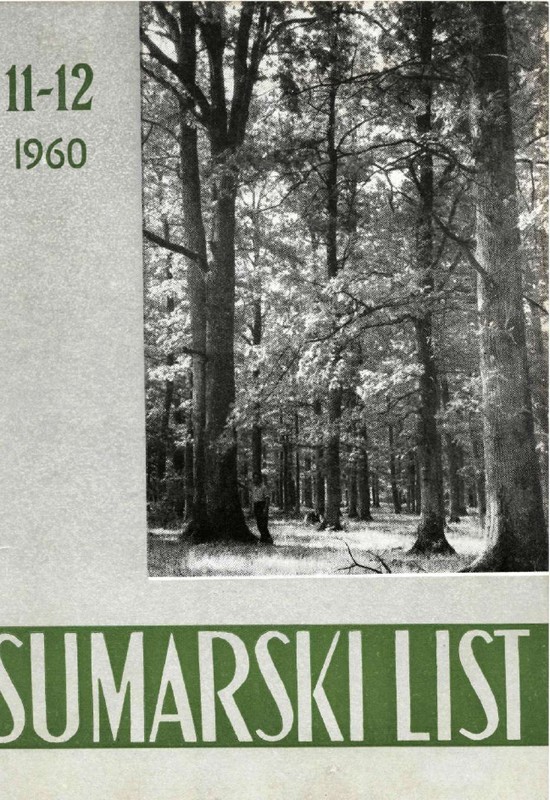
broj: 11-12/1960
pdf (12,4 MB) |
|
||||||||||||||
| DENDROMETRIJA | ||
| Emrović Borivoj | ||
| Double-entry volume tables for Silver Fir in Gorski Kotar region. PDF EN | 345 | |
| ISKORIŠČAVANJE ŠUMA | ||
| Bađun Stanko | ||
| The effect of blue-stain on the techncal properties of wood. PDF EN | 357 | |
| ZAŠTITA ŠUMA | ||
| Mikloš Ivan | ||
| Pygaera anastomosis L. — a new insect pest on Poplars. PDF EN | 369 | |
| UZGAJANJE ŠUMA | ||
| Zmijanac Đuro | ||
| Some diriections for the cultivation of forest tree species in plantations. PDF EN | 371 | |
| Žetko Alojz | ||
| Successful sowing by hand of the Austrian Pine in the Karst region. PDF | 379 | |
| Piškorić Oskar | ||
| Douglas Fir (Pseudotsuga Douglasii Carr.) as one of the species constituting the productive stands in the degraded part of the Karst region. PDF EN | 383 | |
| Summary: The author reviews the possibility of establishing productive forest stands, i. e. stands which will be profitable even on individual sites of degraded part of the Karst region. In the first part are presented data on artificially established stands of Douglas Fir (Pseudotsuga Douglasii Carr.), Fir (Abies Vilmorinii Mast.), and Deodar Cedar (Cedrus deodara Laws.) in a tree alley of the former estate of Hütterot at Rovinj (in Istria). The 57-year-old Fir stands have a mean stand tree of 65 cm. in diameter and 11 m. in height (Tab. 2), while a 47-year-old stand of Douglas Fir presents in its more thinly stocked portion a mean tree of 34 cm. in diameter and 20 m in height, and in its denser portion a mean tree of 22 cm. in diameter and 16 m. in height. In the second part of the article is dealt with the profitability to establish the stands of such kinds. Actually, the calculation was carried out only for the Douglas Fir on the basis of the planting expenses of 354,000 Din./ha. (Tab. 5), annual operating costs of 1.000 Din./ha.. and 2 % as the rate of return for investments and operating costs. This calculation shows that these costs are paid by the value of thinning material obtained until the 40th year of" the stand (Tab. 6 and 7). The remunerativeness as to the Deodar-Cedar stands will be analogous, while the Fir stands do not show such profitability. The author, however, advocates the opinion that the "profitableness" of a forest must not be measured in the same measure as for instance in the industry because the character of the forest production is a different one, viz. after the first rotation the stands can be reproduced without special expenses (by natural regeneration) as well as because the forests accomplish also a protective function, especially in the Karst region. | ||


